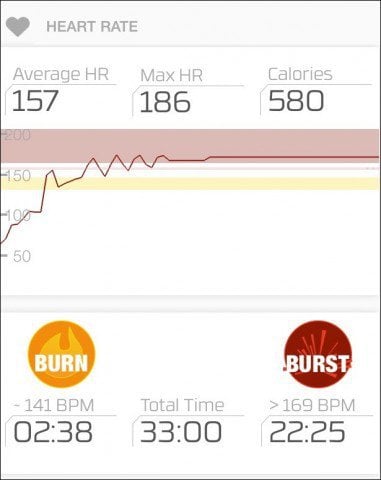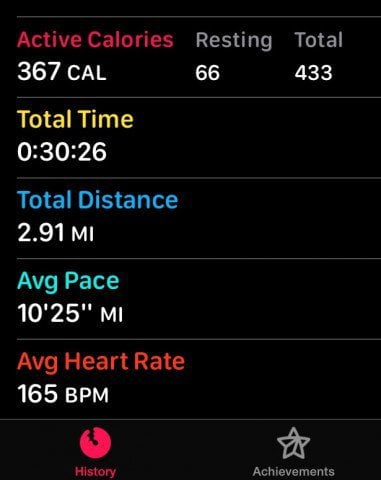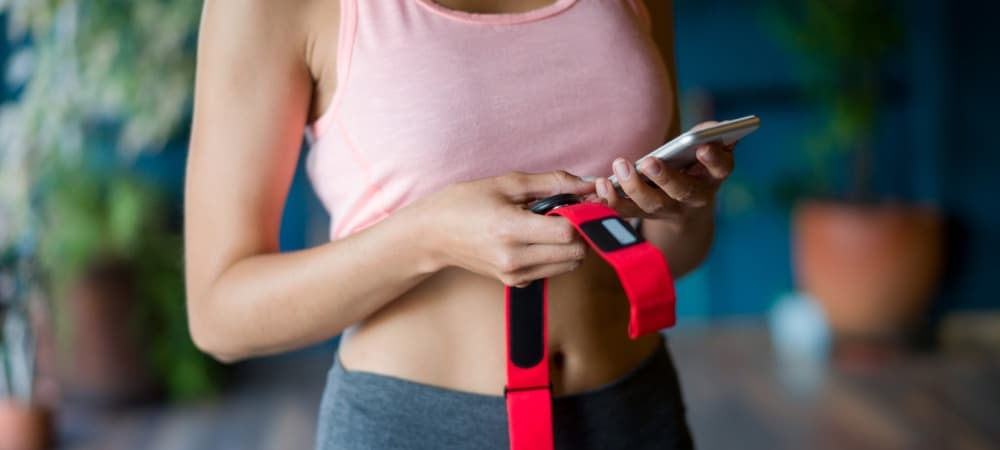How Accurate is Heart Monitoring on the Apple Watch?

How accurate is the heart rate monitor on Apple Watch? I did a few tests to compare the Apple Watch to other devices, and it did surprisingly well.
The Apple Watch, like most fitness trackers, records your steps and motion. The higher-end trackers also monitor your heart rate, but how accurate is it? I did a few tests to compare the Apple Watch to other devices, and it did surprisingly well.
What’s the Best Way to Track Your Heart Rate?
The Wall Street Journal compared wrist-based heart rate monitors to consumer chest monitors. They then compared both types of monitors to a doctor’s EKG. The results were that the wrist monitors wildly varied when compared with a professional EKG. The chest monitor, though, matched the EKG results.
For consumers who are fitness enthusiasts, those chest monitors are the way to go! Companies like Garmin, Polar, and Wahoo all make chest monitors.
How Does the Apple Watch Compare?
Methodology
Apple explains the monitoring isn’t perfect, but it does an excellent job overall. I wore both a Powr Labs Chest Monitor paired to my iPhone and an Apple Watch to keep things honest in my test. I monitored my heart rate on the Apple Watch while also keeping the Wahoo Fitness App open on my iPhone. I try to do interval-style training on the treadmill. I try to keep my heart rate in “the zone,” pushing myself to my max. I then wait until my heart rate lowers and then ramp it up again. I then compared the results of the two devices shown below.
Results


Wahoo test results


Apple Watch test results
After about a month of regular heart rate monitoring, my results matched the Wall Street Journal. The variance wasn’t as extreme as they found. My results varied by about 10%. Rarely, my results were just crazy. One time my heart rate was 250! Wow, I must be a Timelord with two hearts! When I had an EKG test, they once had to do it over. All monitoring devices can mess up.
How to Get Better Heart Rate Results
With my testing, I learned a few things that improved my watch results.
Keep it clean
If you sweat often, residue collects on your Apple Watch. It interrupts the sensors and can mess up your heart rate monitoring. Before I start a workout session, I take off my watch. I use a microfiber cloth I keep in my gym bag to gently wipe the sensors. I then use a towel to wipe my arm free of excess sweat. This step keeps my watch clean and prevents slipping.
Wear a watch case
When I looked at watch cases, I mentioned that a protector could improve accuracy. The plastic of the case prevents my watch from slipping. That keeps the device accurate. You’ll need to focus on cases that have a matte finish on the exterior. The ones that have a smooth surface could still cause your watch to slip.
Pair a Chest Monitor With Your Watch
Here is the trick people overlook. If you have a Bluetooth heart rate monitor, you can pair it with your Apple Watch. Apple explains the steps in this guide, but you go to Settings on the Apple Watch and select health devices.


It’s that easy. If you do this, the heart rate monitor talks to your Apple Watch. You can’t use an app or other fitness trackers while doing this.
How I Track My Heart Rate During Workouts
To accurately view my progress during workouts, I ignore the Apple Watch results. I know they aren’t fully accurate. On a practical level, it’s hard to look over at my watch while I’m racing on the treadmill. Instead, I use the Wahoo Bluetooth monitor along with the Fitness App to start my workout. That app tracks my progress over time. I then switch over to the Rock My Run app. That app reads data from my Wahoo and shows me my heart rate while listening to music with a high BPM (above 170.) The cool thing about that app is the music gets faster when my heart rate increases. The faster music motivates me. I then look at my iPhone to see my progress and push my heart rate.


My Wish List for Apple Watch Heart Rate Functions
I’d love to ditch third-party apps while working out completely. I’d love it all to be Apple Watch. To do this, Apple needs to give more haptic feedback for heart rates while working out. I should know my heart rate without looking at the watch. Fitness apps like Wahoo or Rock My Run notify me when my heart rate falls above or below the optimal zone.
When I pair the Apple Watch to my chest monitor, that information should be shared with other apps. For example, when I pair Rock My Run with the chest monitor, Rock my Run can’t modify my music as the heart rate increases. If iOS 9 or above and Apple Music can tell which mood I’m in and suggest music based on moods, why couldn’t they do heart rates? If my heart rate is high, give me high BPM music. The killer feature for heart rate monitoring would be to watch my heart rate compared to the music. Apple Music could then suggest which music motivates me the most and find me more songs like that.
I truly heart my Apple Watch, and I’m okay with the monitoring just the way it is. I can track my progress over the day, but I can also specialize with my Bluetooth chest monitor while working out.
5 Comments
Leave a Reply
Leave a Reply







shockersh
September 14, 2015 at 9:18 am
Have you ever had a Fitbit? How would you compare the Fitbit with the Apple watch? That’s what I’ve been trying to decide between.
Granted, they are MUCH different however, so is the price. ;)
Dave Greenbaum
September 20, 2015 at 3:24 pm
I suspect it would work about the same. The whole concept of wrist versus chest measurements would be the same on any platform.
Daniel
October 8, 2015 at 10:21 pm
I bought the FitBit surge 3 weeks ago to monitor HR whilst at the gym. I liked the idea of no chest strap and the functionality.
Ive since given up on the FItBit and given it to a friend. The accuracy was horrendous, it didn’t pick up on rapid HR increase for High Intensity Interval training and for any activity that results in your watch wearing arm being flexed, it completely lost all HR at all for up to 1 minute. Even then it would usually lose the pulse after 15 or so seconds.
From what I understand the FitBit is OK for walking and probably running but not HIIT, weight training, rowing or boxing.
Erlend Thune
September 14, 2015 at 11:36 am
If you are interested in heart rate training, I can recommend my app “Heart Rate Training” for iphone/ipad/ipod touch. Provided you have a bluetooth smart heart rate sensor connected, the app will use synthetic speech to announce your heart rate as often as you like. You can choose whether you want the reading to be heartbeats per minute or the percentage of your maximum heart rate. The synthetic speech takes away the need of looking at a display to know your heart rate. Instead you can use your ears to get this information and concentrate your eyes elsewhere. I made the app to manage to stay in the right heart rate zones when training or competing. As soon as I hear my heart rate is creeping upwards or downwards into a zone I do not want to be in, I slow down or speed up. You will be amazed of how quickly your heart responds to changes in inclination, and how it differs when running compared to cycling f.ex. The app is free, but you will be encouraged to buy it. You can download the app here: https://itunes.apple.com/us/app/heart-rate-training/id1014082292?mt=8
Doug
April 7, 2016 at 11:20 am
Try the MIO Fuse. I wore mine while getting a stress test and it matched the EKG machine.